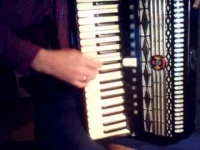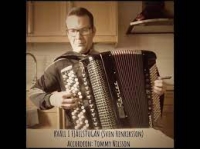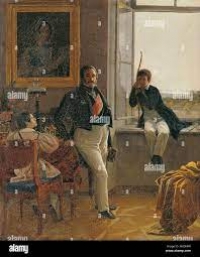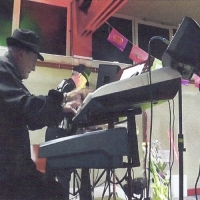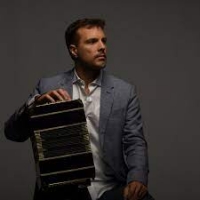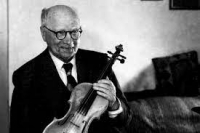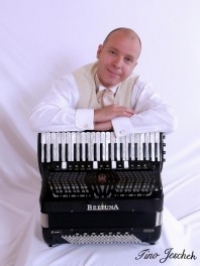Accordion Sheet Music
 "in town ... I still remember him saying to me 'Is there any reason you're not using your little finger?'..." Ray Flacke / Ricky Scaggs Band
"in town ... I still remember him saying to me 'Is there any reason you're not using your little finger?'..." Ray Flacke / Ricky Scaggs Band
Aram Khachaturyan
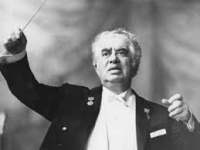
Aram Ilyich Khachaturian was a Soviet Armenian composer and conductor. He is considered one of the leading Soviet composers. Born and raised in Tbilisi, the multicultural capital of Georgia, Khachaturian moved to Moscow in 1921 following the Sovietization of the Caucasus.
Richard Abel

Richard Abel is a Canadian instrumental musician and pianist. He is one of the best selling Canadian instrumental artists of all time. He has been nominated for a Juno award three times.
Bach

Johann Sebastian Bach (31 March 1685 – 28 July 1750) was a German composer and organist whose sacred and secular works for choir, orchestra, and solo instruments drew together the strands of the Baroque period and brought it to its ultimate maturity. Although he introduced no new forms, he enriched the prevailing German style with a robust contrapuntal technique, an unrivalled control of harmonic and motivic organisation in composition for diverse musical forces, and the adaptation of rhythms and textures from abroad, particularly Italy and France.
Revered for their intellectual depth and technical and artistic beauty, Bach's works include the Brandenburg concertos; the Goldberg Variations; the English Suites, French Suites, Partitas, and Well-Tempered Clavier; the Mass in B Minor; the St. Matthew Passion; the St. John Passion; The Musical Offering; The Art of Fugue; the Sonatas and Partitas for violin solo; the Cello Suites; more than 200 surviving cantatas; and a similar number of organ works, including the celebrated Toccata and Fugue in D Minor.
While Bach's fame as an organist was great during his lifetime, he was not particularly well-known as a composer. His adherence to Baroque forms and contrapuntal style was considered "old-fashioned" by his contemporaries, especially late in his career when the musical fashion tended towards Rococo and later Classical styles. A revival of interest and performances of his music began early in the 19th century, and he is now widely considered to be one of the greatest composers in the Western tradition.
Revered for their intellectual depth and technical and artistic beauty, Bach's works include the Brandenburg concertos; the Goldberg Variations; the English Suites, French Suites, Partitas, and Well-Tempered Clavier; the Mass in B Minor; the St. Matthew Passion; the St. John Passion; The Musical Offering; The Art of Fugue; the Sonatas and Partitas for violin solo; the Cello Suites; more than 200 surviving cantatas; and a similar number of organ works, including the celebrated Toccata and Fugue in D Minor.
While Bach's fame as an organist was great during his lifetime, he was not particularly well-known as a composer. His adherence to Baroque forms and contrapuntal style was considered "old-fashioned" by his contemporaries, especially late in his career when the musical fashion tended towards Rococo and later Classical styles. A revival of interest and performances of his music began early in the 19th century, and he is now widely considered to be one of the greatest composers in the Western tradition.
Michael A Schmid

Mike Schmid is an American singer/songwriter, as well as the keyboard player and backing vocalist for The Chainsmokers, Miley Cyrus, Troye Sivan and many other pop acts.
Pietro Frosini
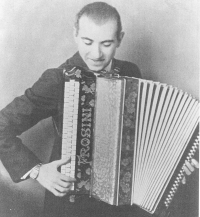
Pietro Frosini (9 August 1885 – 2 September 1951) was one of the first famous "stars of the accordion." He was born in Catania, Sicily, in 1885 and began to play the chromatic button accordion at the age of six. In 1905 he emigrated to San Francisco and was discovered by a talent scout for the Orpheum Vaudeville Circuit.Frosini made one of the first accordion recordings on a cylinder record for Edison in 1907 and made his first Victor recording in 1908. He traveled extensively on the vaudeville circuit in America and abroad and even performed for the King of England.
Nikolai Ryskov
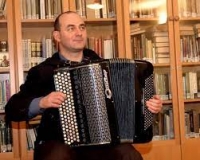
Nikolai Ryskov is a Russian Accordion-Bayan player and living now permanently in the UK.He graduated at
the Russian Academy of Music of Gnessin in 1994 in Moscow. He is arranging any kind of music for Accordion Solo.
He is very fond of Astor Piazzolla music and is arranging it for Accordion Solo and Duo Accordions.
the Russian Academy of Music of Gnessin in 1994 in Moscow. He is arranging any kind of music for Accordion Solo.
He is very fond of Astor Piazzolla music and is arranging it for Accordion Solo and Duo Accordions.
Grigoras Dinicu
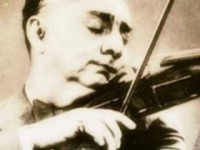
Grigoraș Ionică Dinicu was a Romanian violin virtuoso and composer of Roma ethnicity. He is most famous for his often-played virtuoso violin showpiece "Hora staccato" and for making popular the tune Ciocârlia, composed by his grandfather Angheluș Dinicu for "nai".
Giovanni Tornambene
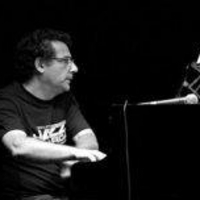
Giovanni Tornambene Musical artist Genre: Alternative/Indie Record labels: Soundiva, Giovanni Tornambene, SIAE
EPs: Canalizzare gli Angeli, Tutto Ciò Che Sei, MORE Songs Like a Cup of Wine Christmas Jazz Night 2021 (Best X-Mas Jazz Music) · 2021 Suoni che Danno Fastidio ai Cani Suoni che Danno Fastidio · 2021 Musica Demoniaca Che Strana Musica · 2020
EPs: Canalizzare gli Angeli, Tutto Ciò Che Sei, MORE Songs Like a Cup of Wine Christmas Jazz Night 2021 (Best X-Mas Jazz Music) · 2021 Suoni che Danno Fastidio ai Cani Suoni che Danno Fastidio · 2021 Musica Demoniaca Che Strana Musica · 2020
Gus Viseur
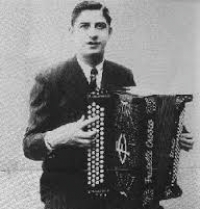
Gus Viseur, born Gustave-Joseph Viseur (15 May 1915 – 25 August 1974) was a Belgian/French button accordionist.
Gus Viseur was a virtuoso in the musette genre, during the swing era in the 1930s. He is the only jazz accordionist who is a member of the famous Hot Club de France, conducted by Charles Delaunay.
Gus Viseur was a virtuoso in the musette genre, during the swing era in the 1930s. He is the only jazz accordionist who is a member of the famous Hot Club de France, conducted by Charles Delaunay.
Traditional

Johann Strauss
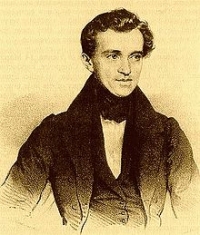
Johann Strauss I (March 14, 1804 – September 25, 1849; German: Johann Baptist Strauß, Johann Strauss (Vater); also Johann Baptist Strauss, Johann Strauss, Sr., the Elder, the Father), born in Vienna, was an Austrian Romantic composer famous for his waltzes, and for popularizing them alongside Joseph Lanner, thereby setting the foundations for his sons to carry on his musical dynasty. His most famous piece is probably the Radetzky March (named after Joseph Radetzky von Radetz), while his most famous waltz is probably the Lorelei Rheinklänge, Op. 154.
Hermeto Pascoal
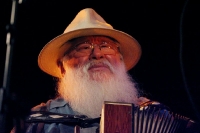
Hermeto Pascoal (born June 22, 1936) is a Brazilian composer and multi-instrumentalist. He was born in Lagoa da Canoa, Alagoas, Brazil. Pascoal is a significant figure in the history of Brazilian music, mainly known for his abilities in orchestration and improvisation, as well as being a record producer and contributor to many Brazilian and international albums.
Andy Cutting
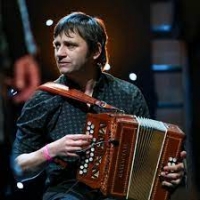
Andy Cutting is an English folk musician and composer. He plays melodeon and is best known for writing and performing traditional English folk and his own original compositions which combine English and French traditions with wider influences.
Tchaikovsky
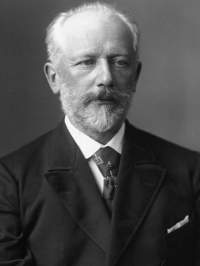
Pyotr Il'yich Tchaikovsky (May 7 1840 â November 6 1893) was a Russian composer of the Romantic era. While not part of the nationalistic music group known as "The Five", Tchaikovsky wrote music which, in the opinion of Harold Schonberg, was distinctly Russian: plangent, introspective, with modally-inflected melody and harmony.
Aesthetically, Tchaikovsky remained open to all aspects of Saint Petersburg musical life. He was impressed by Serov and Balakirev as well as the classical values upheld by the conservatory. Both the progressive and conservative camps in Russian music at the time attempted to win him over. Tchaikovsky charted his compositional course between these two factions, retaining his individuality as a composer as well as his Russian identity. In this he was influenced by the ideals of his teacher Nikolai Rubinstein and Nikolai's brother Anton.
Tchaikovsky's musical cosmopolitanism led him to be favored by many Russian music-lovers over the "Russian" harmonies and styles of Mussorgsky, Borodin and Rimsky-Korsakov.
Nonetheless he frequently adapted Russian traditional melodies and dance forms in his music, which enhanced his success in his home country. The success in St. Petersburg at the premiere of his Third Orchestral Suite may have been due in large part to his concluding the work with a polonaise. He also used a polonaise for the final movement of his Third Symphony.
Aesthetically, Tchaikovsky remained open to all aspects of Saint Petersburg musical life. He was impressed by Serov and Balakirev as well as the classical values upheld by the conservatory. Both the progressive and conservative camps in Russian music at the time attempted to win him over. Tchaikovsky charted his compositional course between these two factions, retaining his individuality as a composer as well as his Russian identity. In this he was influenced by the ideals of his teacher Nikolai Rubinstein and Nikolai's brother Anton.
Tchaikovsky's musical cosmopolitanism led him to be favored by many Russian music-lovers over the "Russian" harmonies and styles of Mussorgsky, Borodin and Rimsky-Korsakov.
Nonetheless he frequently adapted Russian traditional melodies and dance forms in his music, which enhanced his success in his home country. The success in St. Petersburg at the premiere of his Third Orchestral Suite may have been due in large part to his concluding the work with a polonaise. He also used a polonaise for the final movement of his Third Symphony.
Music theory
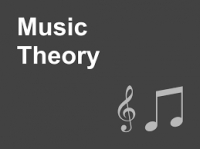
Music theory is the study of the practices and possibilities of music. The Oxford Companion to Music describes three interrelated uses of the term "music theory"
John Fjeldbu
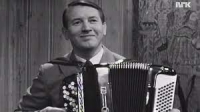
John Fjeldbu Musical artist Songs Hilsen til Eidskog - vals Trickspæll - 2 · 1975 Villkatten, konsertmasurka Norske trekkspillsolister · 2018 Bågskytten - vals .
Ben Cramer
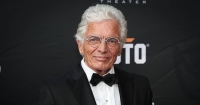
Ben Cramer (born Bernardus Kramer; 17 February 1947) is a Dutch singer who represented the Netherlands in the 1973 Eurovision Song Contest.Cramer was born in Amsterdam. He made his television debut in 1966 with his backing group the Spaklings, and was spotted by singer Annie de Reuver, who helped him obtain a record deal. In 1967, his first single, "Zai zai zai", became a hit, reaching No. 7 on the Dutch chart. The follow-up "Dans met mij" also peaked at No. 7, and he would have a string of successful records in the late 1960s and early 1970s. His most fondly-remembered record is "De Clown" from 1971.
James Pierpont
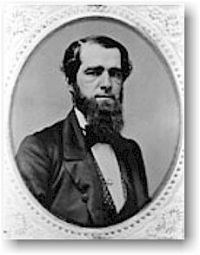
"Jingle Bells", also known as "One Horse Open Sleigh", is one of the best known and commonly sung secular Christmas songs in the world. The song has been translated into many languages. It was written by James Lord Pierpont (1822–1893) and copyrighted under the title 'One Horse Open Sleigh' on September 16, 1857. He was born in Massachusetts, and died in Winter Haven, Florida. He is buried at Laurel Grove Cemetery in Savannah, Georgia. He was inducted into the Songwriters Hall of Fame in 1970.
Albert Vossen
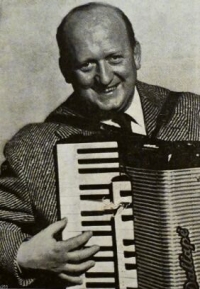
Albert Vossen Composer Born: May 22, 1910 Died: August 10, 1971, Cologne, Germany Songs Fliegende Blätter
Karo Sieben Flick-Flack
Karo Sieben Flick-Flack
F. DE DIEGO
Spanish composer and singer, born in 1958. Founder of "Raquel": in 1981 they recorded just one single. Later he released two solo albums. In Groups:.
Dominique Perczak
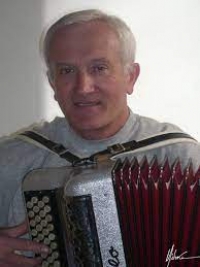
Pleasant moment of relaxation, a few lines on a sheet of paper, key to happiness, a round, a
quarter note, an eighth note, a quarter note are placed, a sigh, a melody is created, the instrument discovers for the
great pleasure of the Musician ... and of the Listener ...
quarter note, an eighth note, a quarter note are placed, a sigh, a melody is created, the instrument discovers for the
great pleasure of the Musician ... and of the Listener ...
Martin Weyde
Martin Weyde for amateur or professional musicians. ... Martin Weyde. The information about this artist has not been added yet.
Taito Vainio
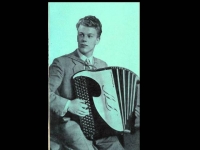
Actor | Composer | Soundtrack. Taito Vainio was born on April 1, 1935 in Mäntsälä, Finland. He was an actor and composer, known ... Born: April 1, 1935. Died: October 6, 2001 (age 66)
Repnikov Albin
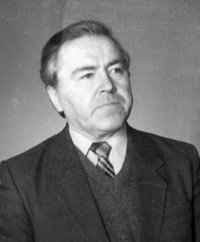
Repnikov Albin (1932 - 2007) Repnikov was born on December 29th 1932 in the Perm Region. In 1953 he finished his studies at the Music School in Irkutsk and in ...
Viacheslav Semyonov
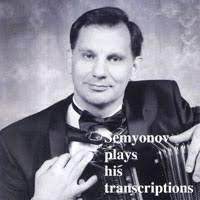
Viatcheslav Semionov was born in 1946 in the ancient city of Trubchevsk, Bryansk. He is an accordionist, composer, bayan player, teacher and artist.
Astor Piazzolla
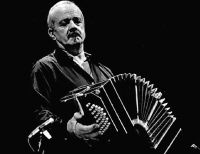
Ástor Pantaleón Piazzolla (March 11, 1921 – July 4, 1992) was an Argentine tango composer and bandoneón player. His oeuvre revolutionized the traditional tango into a new style termed nuevo tango, incorporating elements from jazz and classical music. An excellent bandoneonist, he regularly performed his own compositions with different ensembles.
Piazzolla's nuevo tango was distinct from the traditional tango in its incorporation of elements of jazz, its use of extended harmonies and dissonance, its use of counterpoint, and its ventures into extended compositional forms. As Argentine psychoanalyst Carlos Kuri has pointed out, Piazzolla's fusion of tango with this wide range of other recognizable Western musical elements was so successful that it produced a new individual style transcending these influences. It is precisely this success, and individuality, that makes it hard to pin down where particular influences reside in his compositions, but some aspects are clear. The use of the passacaglia technique of a circulating bass line and harmonic sequence, invented and much used in 17th and 18th century baroque music but also central to the idea of jazz "changes", predominates in most of Piazzolla's mature compositions. Another clear reference to the baroque is the often complex and virtuosic counterpoint that sometimes follows strict fugal behavior but more often simply allows each performer in the group to assert his voice. A further technique that emphasises this sense of democracy and freedom among the musicians is improvisation that is borrowed from jazz in concept, but in practice involves a different vocabulary of scales and rhythms that stay within the parameters of the established tango sound-world. Pablo Ziegler has been particularly responsible for developing this aspect of the style both within Piazzolla's groups and since the composer's death.
Piazzolla's nuevo tango was distinct from the traditional tango in its incorporation of elements of jazz, its use of extended harmonies and dissonance, its use of counterpoint, and its ventures into extended compositional forms. As Argentine psychoanalyst Carlos Kuri has pointed out, Piazzolla's fusion of tango with this wide range of other recognizable Western musical elements was so successful that it produced a new individual style transcending these influences. It is precisely this success, and individuality, that makes it hard to pin down where particular influences reside in his compositions, but some aspects are clear. The use of the passacaglia technique of a circulating bass line and harmonic sequence, invented and much used in 17th and 18th century baroque music but also central to the idea of jazz "changes", predominates in most of Piazzolla's mature compositions. Another clear reference to the baroque is the often complex and virtuosic counterpoint that sometimes follows strict fugal behavior but more often simply allows each performer in the group to assert his voice. A further technique that emphasises this sense of democracy and freedom among the musicians is improvisation that is borrowed from jazz in concept, but in practice involves a different vocabulary of scales and rhythms that stay within the parameters of the established tango sound-world. Pablo Ziegler has been particularly responsible for developing this aspect of the style both within Piazzolla's groups and since the composer's death.
Joxan Goikoetxea
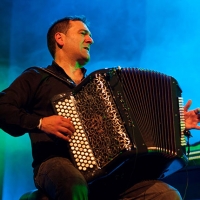
Joxan Goikoetxea Musical artist Albums: Beti Ttun Ttun, Goazen Lagun, MORE Songs Bentatik nator Innervisions · 2007
Sagar Dantza Mugen Dantza · 2021 Orro Txikia Mugen Dantza · 2021
Sagar Dantza Mugen Dantza · 2021 Orro Txikia Mugen Dantza · 2021
Makarenko R
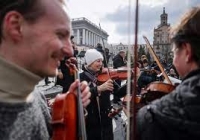
Makarenko R. composer multi-instrumental musician and composer. Classically trained, she holds an LLCM and ARCT in Piano Performance and an ...
Aram Khachaturian
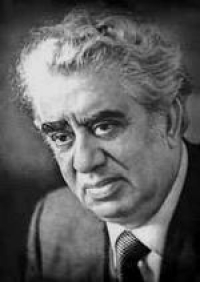
Aram Ilyich Khachaturian (Armenian: Արամ Խաչատրյան; Russian: Ара́м Ильи́ч Хачатуря́н; June 6 1903 – May 1, 1978) was a prominent Soviet Armenian composer. Khachaturian's works were often influenced by classical Russian music and Armenian folk music. He is most famous for the Adagio of Spartacus and Phrygia from his ballet Spartacus, and for the "Sabre Dance" from his ballet Gayane and the adagio from the same ballet, much used in films since its first use in Stanley Kubrick's 2001: A Space Odyssey.
Victor Vlasov
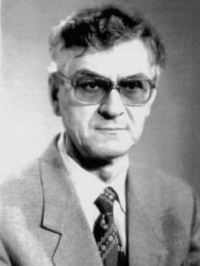
Victor Vlasov was born at Shilka Town of Chitinskaya Region in Russia. He inherited his love for music from both his parents: his father played the balalaika by ear and his mother was the member of a local choir. His paternal grandfather played the harmonica, his maternal grandfather the violin.During the years of the second world war and till 1953 the family Vlasov lived in the Mongolian-People's Republic, within the structure of the Soviet Union. In 1947 they got a two-row button harmonica. His mother's sister played the instrument by ear and she taught Victor how to do it. As she remarked his talent, she advised his parents to buy him a bayan, who has much more possibilities. From 1948 on Victor Vlasov started playing by ear and one year later he started learning music notation from a self-teaching book, as there were no music schools in Mongolia.
Jean Peyronnin
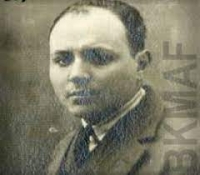
Jean Peyronnin Composer Born: September 19, 1901 Died: March 25, 1948 Songs Reine de musette Mado Bourrasque
Ernesto Lecuona
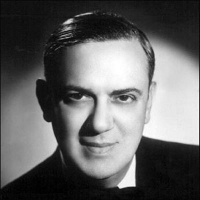
Ernesto Lecuona y Casado (Spanish pronunciation: ; August 6, 1895 – November 29, 1963) was a Cuban composer and pianist of worldwide fame. He composed over six hundred pieces, mostly in the Cuban vein, and was a pianist of exceptional skill. His father was Canarian and his mother was Cuban.
Chopin
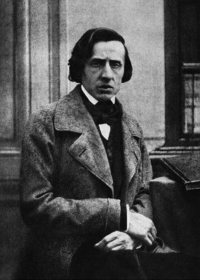
Frédéric Chopin (1 March 1810 – 17 October 1849) was a Polish composer and virtuoso pianist of the Romantic period. He is widely regarded as the greatest Polish composer, and ranks as one of music's greatest tone poets.
He was born in the village of Żelazowa Wola, in the Duchy of Warsaw, to a Polish mother and French-expatriate father, and in his early life was regarded as a child-prodigy pianist. In November 1830, at the age of 20, Chopin went abroad; following the suppression of the Polish November Uprising of 1830–31, he became one of many expatriates of the Polish "Great Emigration."
In Paris, he made a comfortable living as a composer and piano teacher, while giving few public performances. A Polish patriot,
Chopin's extant compositions were written primarily for the piano as a solo instrument. Though technically demanding, Chopin's style emphasizes nuance and expressive depth rather than virtuosity. Chopin invented musical forms such as the ballade and was responsible for major innovations in forms such as the piano sonata, waltz, nocturne, étude, impromptu and prelude. His works are mainstays of Romanticism in 19th-century classical music.
He was born in the village of Żelazowa Wola, in the Duchy of Warsaw, to a Polish mother and French-expatriate father, and in his early life was regarded as a child-prodigy pianist. In November 1830, at the age of 20, Chopin went abroad; following the suppression of the Polish November Uprising of 1830–31, he became one of many expatriates of the Polish "Great Emigration."
In Paris, he made a comfortable living as a composer and piano teacher, while giving few public performances. A Polish patriot,
Chopin's extant compositions were written primarily for the piano as a solo instrument. Though technically demanding, Chopin's style emphasizes nuance and expressive depth rather than virtuosity. Chopin invented musical forms such as the ballade and was responsible for major innovations in forms such as the piano sonata, waltz, nocturne, étude, impromptu and prelude. His works are mainstays of Romanticism in 19th-century classical music.
Billie Holiday
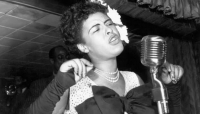
Billie Holiday, American singer, songwriter, composer. Nicknamed "Lady Day", Billie Holiday is the daughter of a traveling musician father. His childhood, deprived of education, included a poor life. She was raped at the age of 11 and was given boarding at a Catholic school.
Claude Kaeser
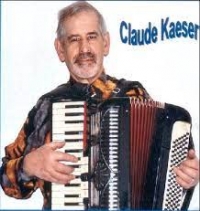
Claude Kaeser (in French) is an accordionist, band leader, multi-instrumentalist and accordion repairer. His website contains sheet music for various of his ...
Andrei Korobeynikov
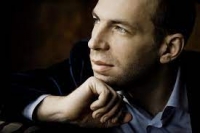
Andrei Korobeinikov was born in 1986 in Dolgoprudny, Moscow Region. He started to play the piano at the age of five and at the age of seven he won the 1st prize at the Tchaikovsky International Piano Competition for Young Musicians (Khimki and Klin, Moscow Region). In 2006 graduated from the Tchaikovsky Moscow State Conservatory where he studied with Andrei Diev, and afterwards he did a postgraduate course at the same conservatory with the same professor, and studied with Vanessa Latarche at the Royal College of Music (London). At the same time, Andrei Korobeinikov got a degree in law. In 2003 he graduated from the European University of Law Justo in Moscow; in 2004–2007 he completed his postgraduate course at the Lomonosov Moscow State University (Department of Civil Law).
Jo Basile
Jo Basile was an influential French accordionist, composer, and later publisher and arranger during the 1950s, '60s, and '70s. During his lifetime he sold millions of records and was a household name in Europe, and to a lesser degree in the eastern half of the United States.
Werner Thomas
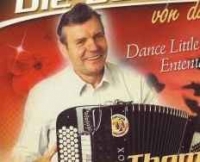
Werner Thomas is an accordionist from Davos, Switzerland credited with composing a tune popularly known as the "Chicken Dance" or the "Birdie Song" while working as a restaurant musician during the early 1950s.
Marcelo Torca
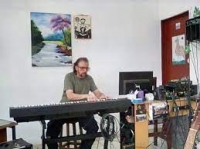
Marcelo Torca Musical artist Songs Bagunçando Piano por Marcelo Torca · 2014 Hallelujan Coleção Melodias e Harmonias Variadas · 2013 Natal Reflexão Feliz Natal · 2012 Eu Vi Ali Piano por Marcelo Torca · 2014.
Peter Michel
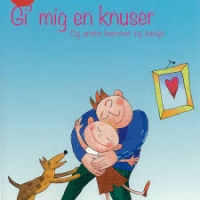
Peter Michel Musical artist Albums: Duo Parikia: Elegie, Gi' mig en knuser - Og andre kanoner og sange, Arethusa Ensemble Songs Gi' mig en knuser Gi' mig en knuser - Og andre kanoner og sange · 2014 Se, nu stiger solen
Gi' mig en knuser - Og andre kanoner og sange · 2014 Det kribler, det krabler Gi' mig en knuser - Og andre kanoner og sange · 2014
Gi' mig en knuser - Og andre kanoner og sange · 2014 Det kribler, det krabler Gi' mig en knuser - Og andre kanoner og sange · 2014
TANGO FAKE BOOK
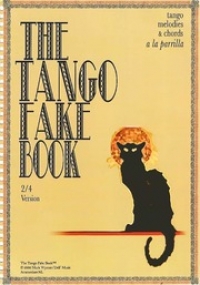
A very broad spectrum of composers and styles are represented. The pieces include selections from among the very first tangos, from before 1900; Guardia vieja tunes; Golden Age tangos; and modern and recent compositions.
See below for a complete list of tunes.
See below for a complete list of tunes.
 Download Sheet Music Net is a site for those who wants to access popular sheet music easily,
letting them download the sheet music for free for trial purposes.
It's completely free to download and try the listed sheet music, but you have to delete the files after 24 hours of trial.
Don't forget, if you like the piece of music you have just learned playing,
treat the artist with respect, and go buy the original sheet music.
Download Sheet Music Net is a site for those who wants to access popular sheet music easily,
letting them download the sheet music for free for trial purposes.
It's completely free to download and try the listed sheet music, but you have to delete the files after 24 hours of trial.
Don't forget, if you like the piece of music you have just learned playing,
treat the artist with respect, and go buy the original sheet music.
